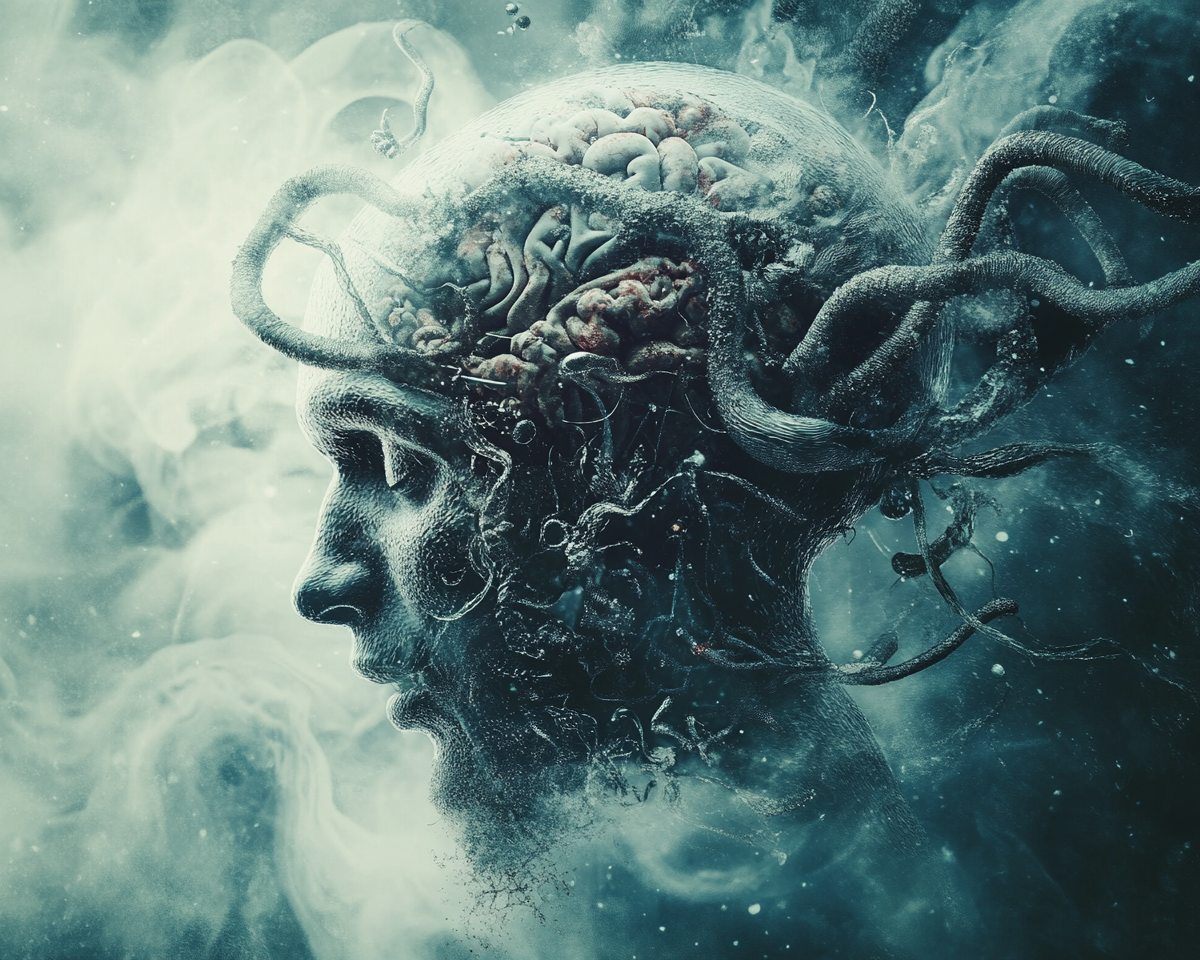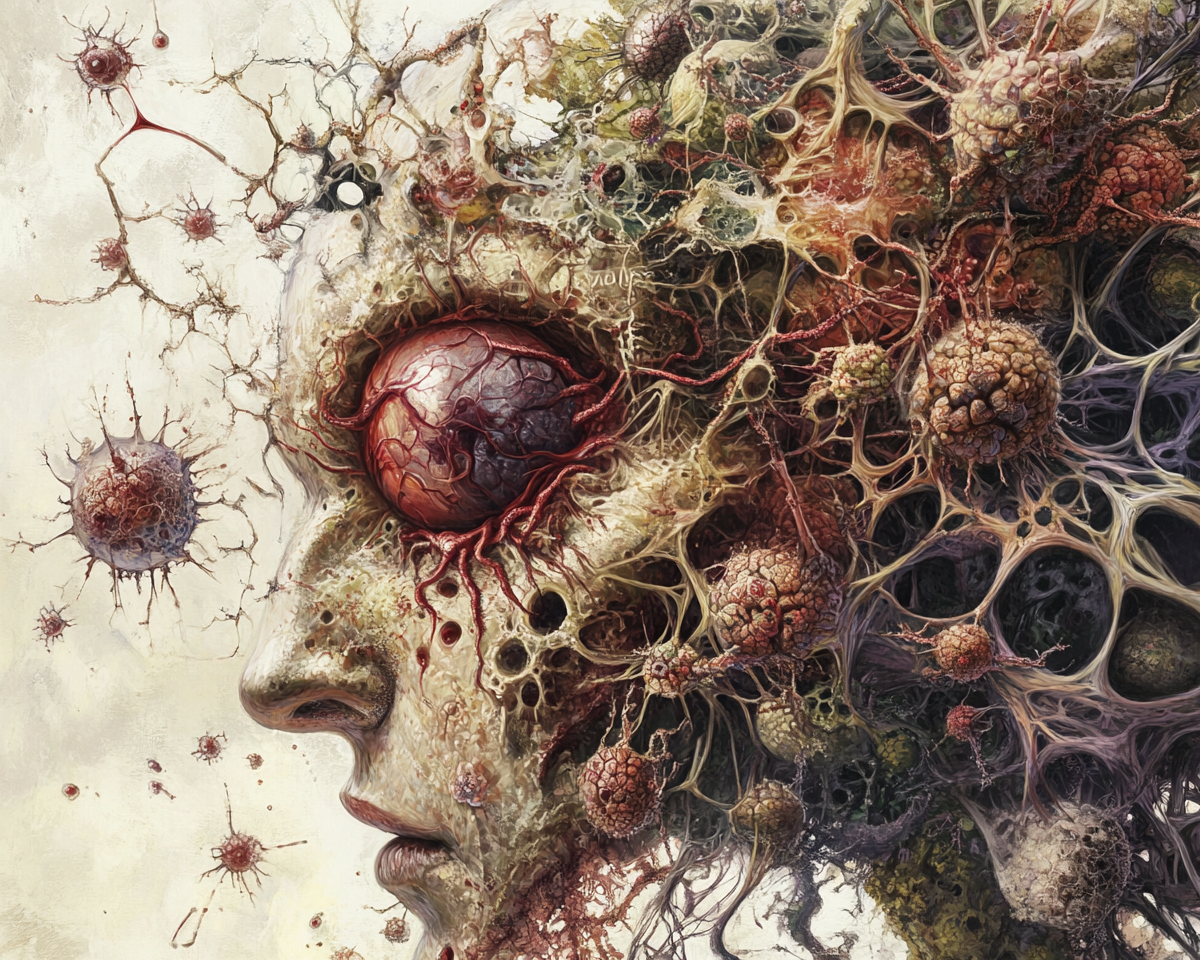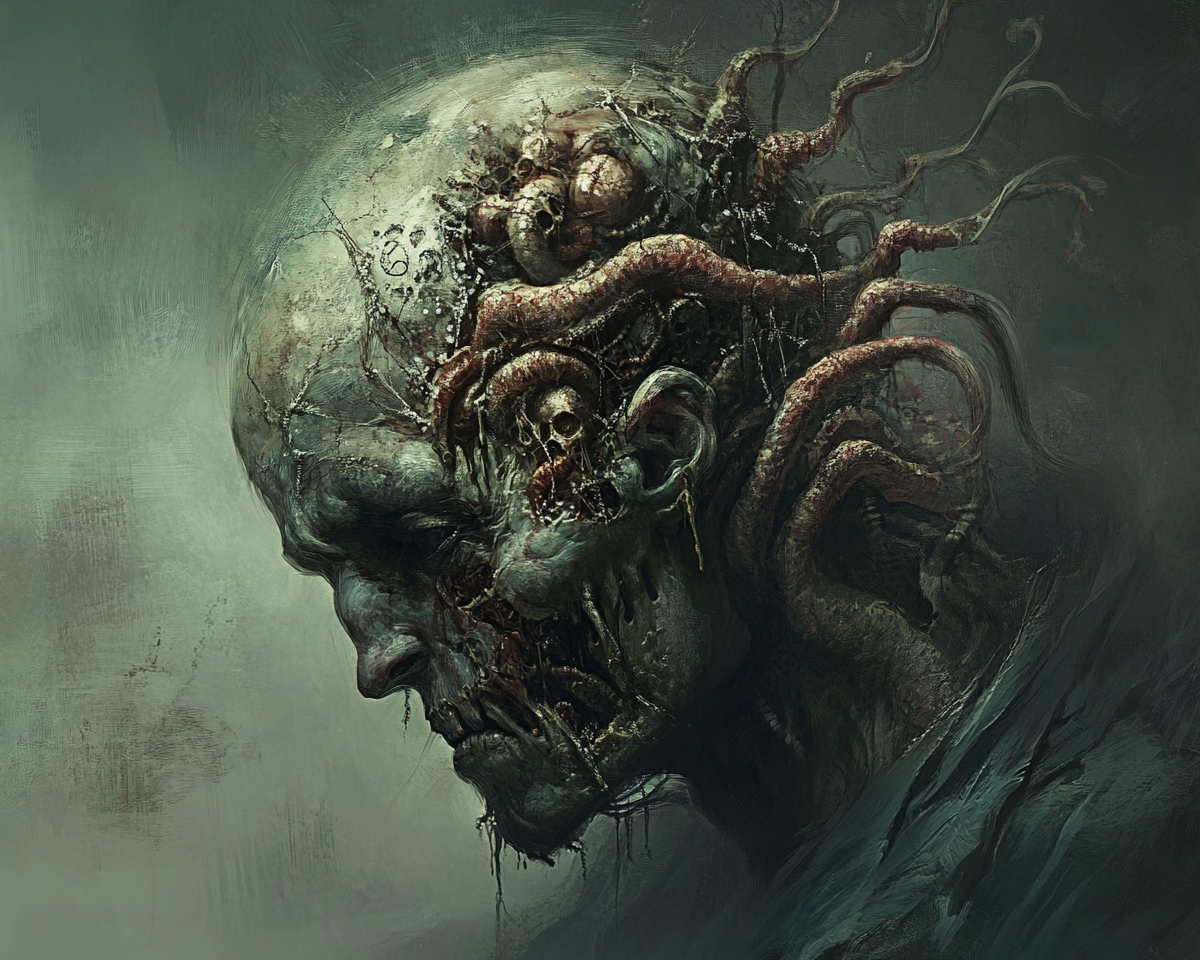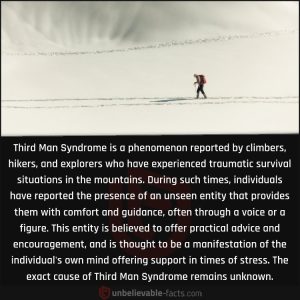Engaging in BDSM, especially through activities like impact play, can set off a surge of brain chemicals (neurochemicals) that change how we feel, process pain, and find pleasure. These chemical shifts often lead to special headspaces, called “subspace” for bottoms / submissives and “domspace” for tops / dominants. Below is a detailed look at which neurochemicals are involved, how they shape pain and pleasure, and ways to support the highs and lows that follow intense BDSM scenes.
While each neurochemical’s general role is well supported, direct scientific research specifically on BDSM-induced neurochemical changes is limited. Much of the understanding is extrapolated from broader studies on stress, pain, reward, and bonding, plus self-reported experiences within BDSM communities as well as own experiences based on more than 20 years of practice.
Neurochemicals and Their Roles
1. Endorphins
• What They Do: Endorphins are our body’s natural opiates. They dull pain and can create a sense of euphoria (a “natural high”).
• During Impact Play: They’re released in response to stress or pain, sometimes transforming pain into a more tolerable or even pleasant sensation.
• Effect on Subspace: A high level of endorphins can lead to a floaty, dreamlike state where physical discomfort feels distant or reduced.
2. Dopamine
• What It Is: Dopamine is the “reward” chemical. It’s linked to motivation, pleasure, and the reinforcement of behaviours.
• During BDSM Scenes: It spikes when there’s anticipation (e.g., waiting for impact) or when a goal is reached (e.g., fulfilling a role in the scene).
• Effect on Subspace: Elevated dopamine can bring satisfaction, excitement, and a strong sense of accomplishment.
3. Adrenaline (Epinephrine) and Noradrenaline (Norepinephrine)
• What They Are: These two chemicals are closely related but have slightly different functions. Adrenaline is mainly released into the bloodstream by the adrenal glands and heightens physical readiness for action. Noradrenaline acts as both a hormone and a neurotransmitter, boosting mental focus and alertness.
• During BDSM Scenes:
o Adrenaline (Epinephrine): Kicks in when we’re excited, fearful, or stressed, increasing heart rate and energy while momentarily dulling pain. It fuels the “fight-or-flight” effect, adding a thrilling edge.
o Noradrenaline (Norepinephrine): Helps maintain alertness and mental clarity. It keeps both tops and bottoms sharply focused on each physical or emotional cue during the scene.
• Effect on Subspace:
o Adrenaline ramps up intensity and can make pain feel sharper yet more exciting.
o Noradrenaline supports a heightened mental state, helping participants stay aware, engaged, and “in the moment.”
4. Oxytocin
• What It Is: Nicknamed the “bonding hormone,” oxytocin supports feelings of trust, closeness, and emotional safety.
• During BDSM Scenes: Any form of comforting touch, warmth, or connection (such as aftercare) can boost oxytocin and deepen the bond between partners.
• Effect on Subspace: Elevated oxytocin provides a cushion of emotional security, making the experience feel safer and more intimate.
5. Serotonin
• What It Is: Serotonin helps regulate mood and maintain emotional balance.
• During BDSM Scenes: Ritualized or structured play (like carefully following rules or enduring a long scene) can lift serotonin levels.
• Effect on Subspace: Greater serotonin can bring feelings of calm, contentment, and emotional steadiness.
Neurochemical Interaction in Pain Processing
1. Transforming Pain into Pleasure
• Pain sets off endorphin and dopamine release, which can encourage the brain to associate pain with something rewarding.
• Repeated consensual exposure to pain in safe environments can reinforce these pleasure pathways.
2. Enhanced Pain Tolerance
• Adrenaline and endorphins lessen pain signals, allowing participants to handle higher intensity than usual.
• This temporary increase in pain threshold can last for several hours after a scene.
3. Emotional Resilience and Catharsis
• Oxytocin and serotonin help keep moods stable while facilitating emotional release.
• Some people find that combining pain and these neurochemicals leads to a cleansing, cathartic experience.
Practical Applications in BDSM
1. Scene Design
• Choose activities that intentionally trigger certain neurochemicals. For example, a slow, rhythmic flogging may boost endorphins, while suspenseful role-play can elevate dopamine.
2. Subspace Management
• Knowing which actions spark specific chemicals helps tops guide bottoms toward a desired headspace—whether that’s a euphoric, adrenaline-charged rush or a calm, serotonin-cantered space.
3. Aftercare
• Gentle touch, reassuring words, and cuddling can restore oxytocin and help balance adrenaline and noradrenaline levels, easing the transition back to normal life.
Final Considerations
Reactions to BDSM and pain differ from person to person, depending on pain tolerance, emotional mindset, and past experiences. Always practice safe, sane, and consensual (SSC) or risk-aware consensual kink (RACK). Communicate clearly about boundaries and follow up with thorough aftercare to keep everyone physically and emotionally safe.
Types of Subspace and Their Neurochemical Foundations
1. Floaty Subspace
• Traits: A lightheaded, dreamy feeling with emotional distance from pain.
• Key Chemicals: Endorphins and adrenaline combine to create a floating, “high” sensation.
2. Emotional Subspace
• Traits: Very open, vulnerable emotional state with a deep sense of trust.
• Key Chemicals: Oxytocin and serotonin soothe anxiety and foster a powerful feeling of bonding.
3. Adrenaline Subspace
• Traits: Intense rush of energy, heightened senses, and excitement.
• Key Chemicals: Adrenaline and dopamine work together, providing both the thrill (adrenaline) and the reward (dopamine). Noradrenaline also enhances mental focus and engagement.
4. Pain Processing Subspace
• Traits: Pain may feel pleasantly warm or become easier to endure.
• Key Chemicals: Endorphins and dopamine reduce pain’s sting and link it with pleasure, while serotonin steadies mood.
Neurochemicals and Their Role in Subdrop
Subdrop occurs when there’s a sudden drop in the heightened levels of adrenaline, endorphins, dopamine, oxytocin, serotonin, and noradrenaline after a scene. This abrupt decrease can lead to a crash in mood, energy, or emotional stability.
Withdrawal Symptoms and Signs of Subdrop
1. Endorphins
• During Play: Provide euphoria and dull pain.
• After Play: When levels fall, participants may feel aches, headaches, or fatigue.
2. Dopamine
• During Play: Rises with anticipation and reward.
• After Play: A drop can bring sadness, low motivation, or a feeling of emptiness.
3. Adrenaline (Epinephrine)
• During Play: Boosts energy and keeps pain at bay.
• After Play: The crash can produce shakiness, exhaustion, or trouble focusing.
4. Noradrenaline (Norepinephrine)
• During Play: Sharpens mental alertness and attention.
• After Play: A decline can lead to mental fog, restlessness, or difficulty staying on task.
5. Oxytocin
• During Play: Creates closeness and feelings of safety.
• After Play: A sudden drop can cause loneliness, insecurity, or emotional longing.
6. Serotonin
• During Play: Helps maintain emotional stability.
• After Play: Reduced levels can trigger mood swings, irritability, or trouble handling stress.
Physical Signs
• Exhaustion, dehydration, or soreness.
• Tremors or shakiness (adrenaline withdrawal).
• Headaches or body aches.
Emotional Signs
• Feelings of emptiness, depression, or irritability.
• Yearning for reassurance, validation, or connection.
Cognitive Signs
• Trouble concentrating or mental fog.
• Revisiting the scene with self-doubt or guilt.
Strategies to Minimize Subdrop
1. Proactive Aftercare
• Keep water, snacks, and warm blankets nearby.
• Offer gentle touch and reassurance to boost oxytocin.
2. Nutritional Support
• Foods with amino acids (e.g., bananas, eggs) can support serotonin production.
• Nuts or dark chocolate provide a dopamine lift.
3. Psychological Support
• Encourage open communication about post-scene feelings.
• Journaling can help process emotions.
• Affirm that everything was consensual.
4. Physical Recovery
• A warm bath or light stretching reduces muscle tension.
• Adequate sleep supports overall neurochemical balance.
5. Planned Decompression
• Gradually ease out of an intense scene instead of stopping abruptly.
• Transition into cuddling or calming activities.
6. Ongoing Self-Care
• Maintain daily routines (exercise, balanced meals, mindfulness).
• Check in with each other in the following days to ensure emotional well-being.
Preventing Subdrop Through Scene Design
1. Manage Expectations
• Communicate about possible subdrop and plan aftercare ahead of time.
• Set boundaries to avoid pushing too far.
2. Monitor Intensity
• Slowly build up and cool down the scene to avoid extreme highs or lows in adrenaline and noradrenaline.
3. Personalised Aftercare
• Adapt aftercare to each person’s needs, as neurochemical responses vary widely.
Conclusion
Subdrop is a natural consequence of the body and brain returning to normal after intense play. By recognizing the signs and causes, partners can provide effective aftercare, maintain open communication, and address each other’s needs. This approach protects the positive side of BDSM while supporting everyone’s mental and physical health.
Neurochemicals in Tops / Dominants: Domspace and Domdrop
Tops / Dominants go through their own neurochemical roller coaster. Although it involves the same chemicals – endorphins, dopamine, adrenaline, noradrenaline, oxytocin, and serotonin – the top’s / dominant’s role in the scene creates a unique experience called domspace. Afterward, they may face domdrop.
Neurochemicals in Domspace
1. Endorphins
• During Play: Physical exertion and intense focus can release endorphins.
• Effect: Eases tension, supporting calm leadership and mental clarity.
2. Dopamine
• During Play: Surges when goals are met (e.g., a bottom / submissive responds positively).
• Effect: Provides a sense of achievement, fuelling motivation and excitement.
3. Adrenaline (Epinephrine) and Noradrenaline (Norepinephrine)
• During Play: Heighten alertness, keep energy levels up, and sharpen decision-making.
• Effect: Give dominants a sense of authority and vigour, helping them read cues and act swiftly.
4. Oxytocin
• During Play: Released through caring actions and emotional exchange with the submissive.
• Effect: Deepens emotional connection and responsibility toward the partner.
5. Serotonin
• During Play: Rises with structured scenes and a clear sense of order.
• Effect: Contributes to calm confidence and emotional stability.
Domspace Characteristics
• Empowered: A burst of clarity and purpose in leading the scene.
• Deeply Connected: Strong emotional bonds, supported by dopamine and oxytocin.
• Euphoric: Ranges from a mild glow to intense pleasure, depending on the scene’s intensity.
Neurochemicals in Domdrop
Once domspace ends, tops / dominants can experience a crash if these chemicals rapidly decline.
After Play Effects:
1. Endorphins
• Physical tiredness or aches.
2. Dopamine
• A sudden dip can cause self-doubt or low mood.
3. Adrenaline and Noradrenaline
• Energy levels plummet, leading to exhaustion, mental fog, or jitteriness.
4. Oxytocin
• Emotional distance or loneliness can surface.
5. Serotonin
• Mood swings or irritability may arise.
Symptoms of Domdrop
• Emotional: Guilt, isolation, or an urgent need for reassurance.
• Physical: Exhaustion, restless sleep, or sore muscles.
• Cognitive: Overthinking the scene, questioning decisions, or feeling “stuck.”
Strategies to Minimize Domdrop
1. Proactive Aftercare for Tops / Dominants
• Rest, hydration, and nutrition are key.
• Share positive feedback about the scene to boost dopamine.
• Plan quiet moments to ease back into daily life.
2. Partner Support
• Bottoms / Submissives can help by showing appreciation, offering affection, and staying present.
3. Reflective Practices
• Journaling helps process any lingering worry or guilt.
• Focus on the consensual nature of the play to ease self-doubt.
4. Regular Self-Care
• Adequate sleep, exercise, and balanced meals keep brain chemicals in check.
• Consider mindfulness or meditation for overall mental stability.
5. Planned Aftercare Rituals
• Develop short, intentional steps to follow after a scene, such as debriefing or quiet closeness.
6. Community Support
• Talking with fellow tops / dominants or mentors can normalize domdrop and provide reassurance.
Conclusion
Domspace and domdrop are powerful neurochemical events for tops / dominants, mirroring the highs and lows that bottoms / submissives experience. Recognizing and managing these fluctuations helps dominants maintain a healthy mindset and strengthen their connection with partners. Proper aftercare and self-awareness can reduce the intensity of domdrop, making BDSM safer and more fulfilling for everyone involved.





